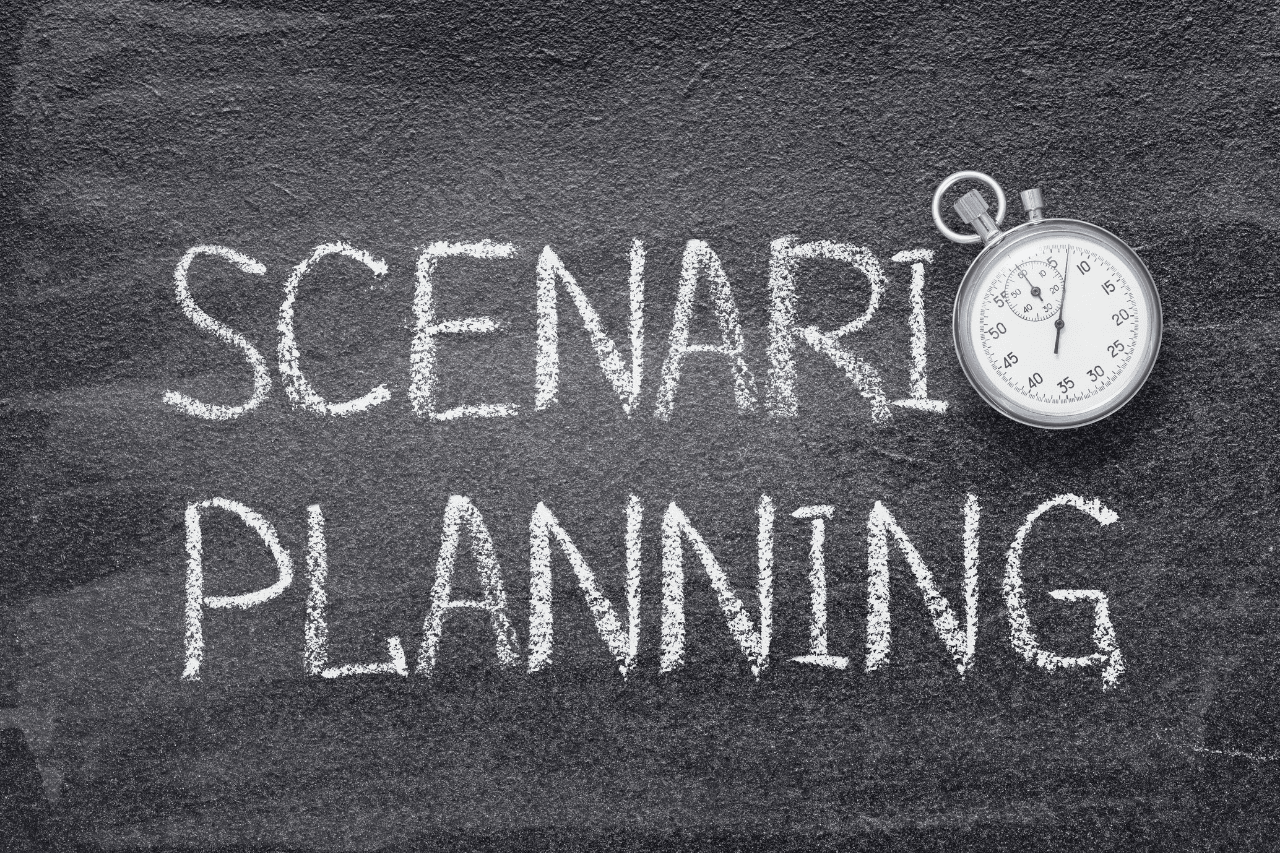Did you know the average business experiences 12 major disruptions per year? From sudden employee departures and shifting customer trends to new competitors and economic shocks, small business owners are constantly navigating uncertainty.
So how do successful entrepreneurs not just survive but thrive amid so much unpredictability?
The secret is scenario planning
What Is Scenario Planning?
Scenario planning is a strategic approach that helps business owners prepare for multiple possible futures. It involves mapping out a variety of “what-if” scenarios and analyzing how they might impact your business operations, cash flow, and overall growth.
In simple terms, it means creating several financial game plans just in case things don’t go as expected.
For example, scenario planning helps you answer questions like:
- What if new tariffs raise your product costs by 10%?
- How long will it take a new product line to become profitable?
- What happens to your expenses if you hire two more employees or let one go?
- How would a 20% drop in sales affect your ability to pay suppliers or employees?
By outlining potential threats and opportunities ahead of time, you can respond quickly and confidently when reality shifts instead of panicking or making reactive decisions.
Why Is Scenario Planning Important for Small Businesses?
Many small businesses fail not because they weren’t profitable but because they were unprepared for change. Whether it’s a global supply chain issue, a sudden dip in demand, or a team shake-up, the most resilient businesses are the ones that already have a plan B (and C).
Here’s what scenario planning helps you do:
- Stay financially stable in changing markets
- Make faster, data-driven decisions
- Reduce stress and uncertainty by knowing your options
- Plan staffing, inventory, and pricing with more clarity
- Communicate better with investors, partners, and team members
Instead of crossing your fingers and hoping for the best, scenario planning empowers you to take proactive control of your business’s future.
Scenario Planning vs. Financial Forecasting: What’s the Difference?
It’s easy to confuse scenario planning with financial forecasting, but they’re actually two sides of the same strategic coin.
🔹 Financial Forecasting:
This is your best estimate of what will happen in your business based on past performance, current trends, and educated assumptions. Forecasts project future revenue, expenses, and cash flow under the most likely scenario.
🔹 Scenario Planning:
This takes your forecast a step further. Instead of predicting just one future, it allows you to explore multiple possible outcomes based on different variables.
Think of it like this:
If running your business is like taking a road trip, your financial forecast is the GPS route that gets you from point A to point B assuming the road is clear.
But scenario planning prepares you for roadblocks, detours, or unexpected traffic. It helps you plan alternate routes so you still reach your destination no matter what pops up along the way.
How to Start Scenario Planning for Your Business
You don’t need a complex system to start building useful scenarios. Here’s a quick breakdown:
- Create a baseline forecast
Use current data to predict expected revenue, expenses, and cash flow. - Identify key variables
These might include pricing, hiring, product costs, customer demand, or loan interest rates. - Build at least three scenarios
- Best-case: High revenue, low costs, strong market conditions
- Worst-case: Sales drop, costs rise, customer churn increases
- Most likely: Based on current trends and data
- Analyze the impact
How will each scenario affect your bottom line? Will you have enough cash on hand? What actions will you need to take? - Adjust and repeat
Regularly revisit your scenarios as new information becomes available and use them to adjust your plans in real time.
Prepare Now, Thrive Later
In today’s fast-moving business world, relying on a single plan is risky. Scenario planning gives you options. It helps you stay flexible, reduce surprises, and make smarter decisions even when the future is uncertain.
So don’t wait for disruptions to catch you off guard. Take time now to map out a few scenarios, and set your business up for resilience and long-term success.




